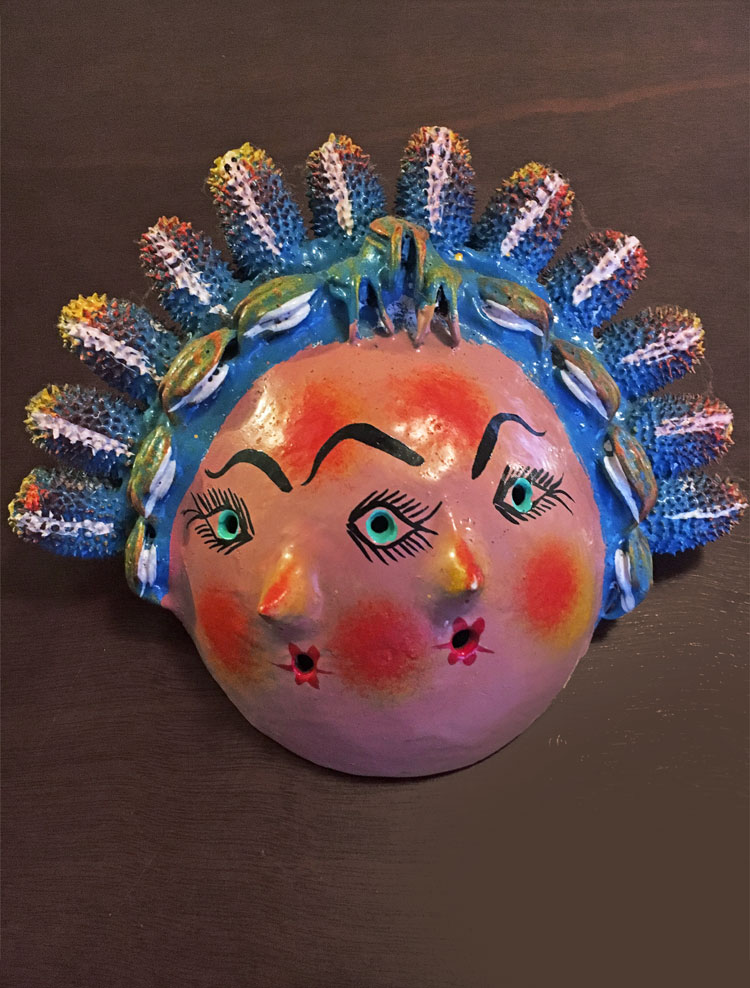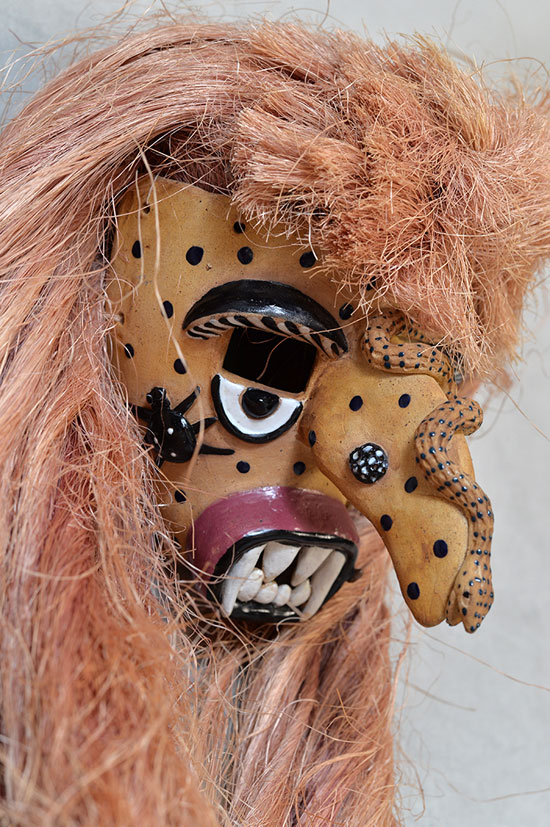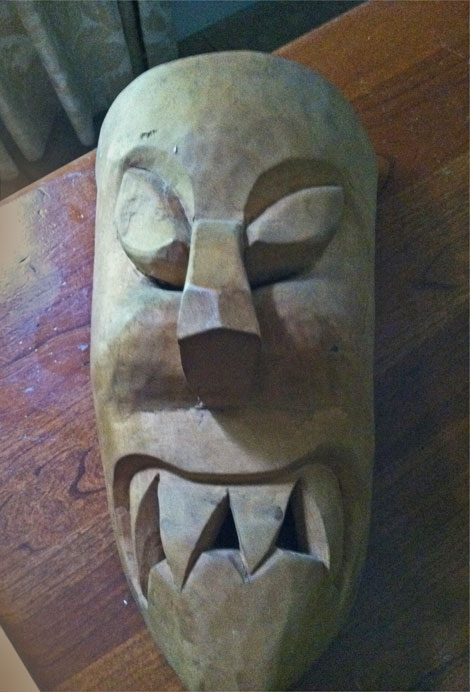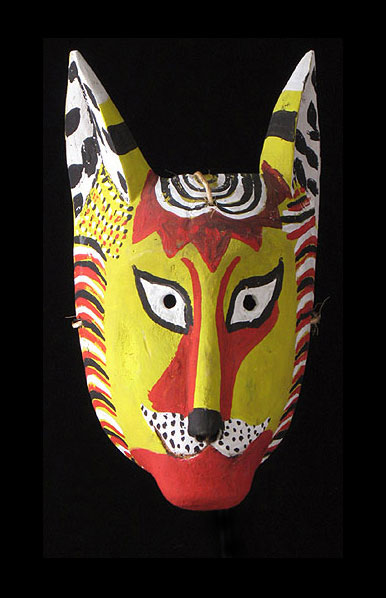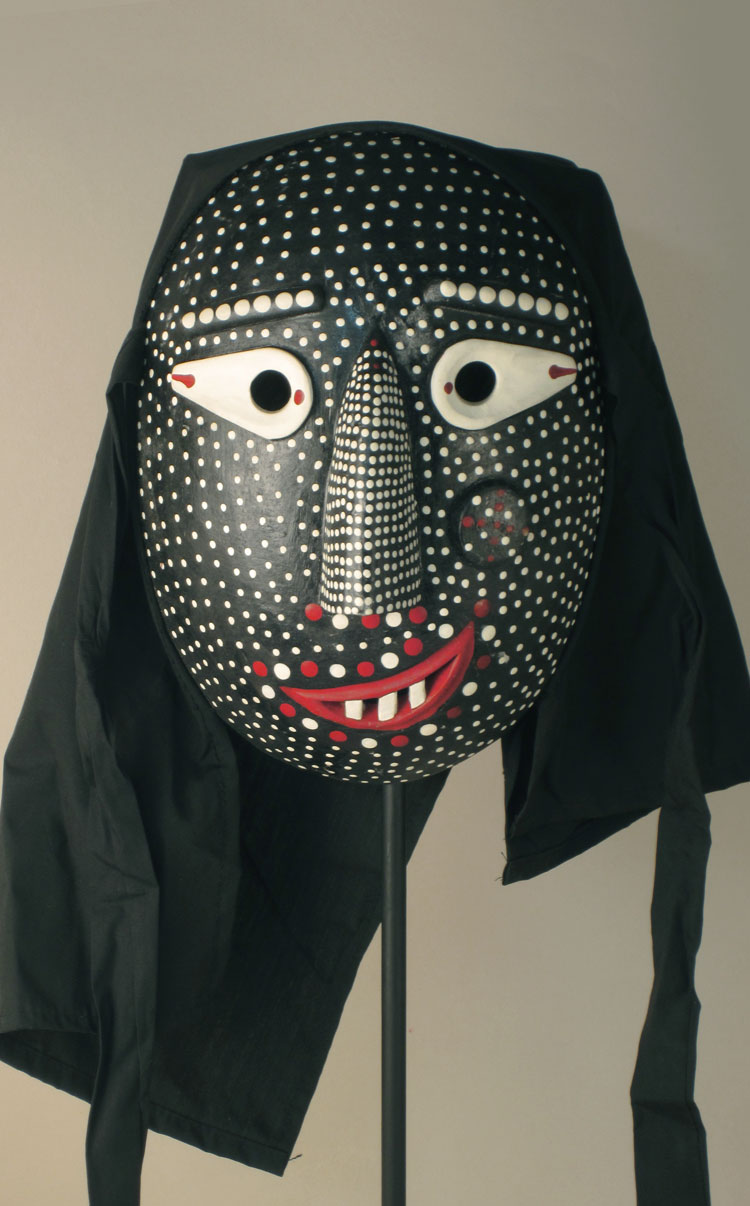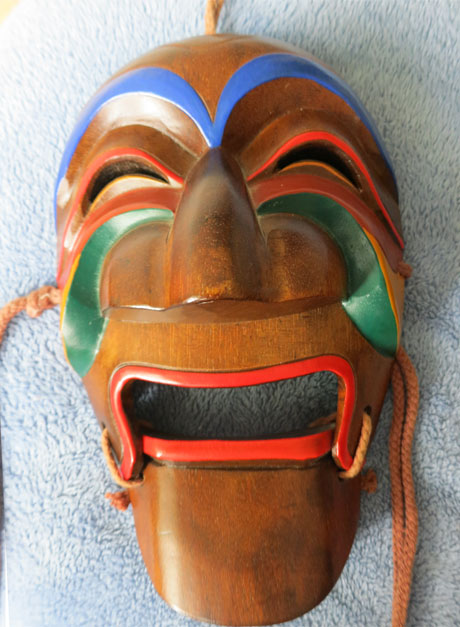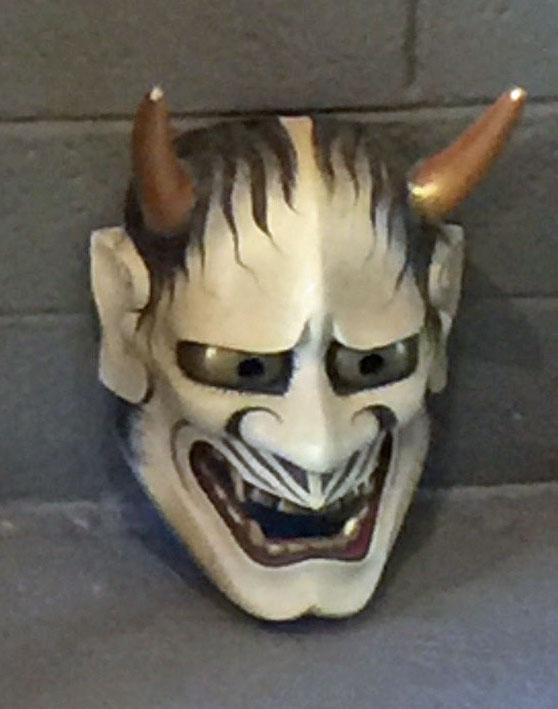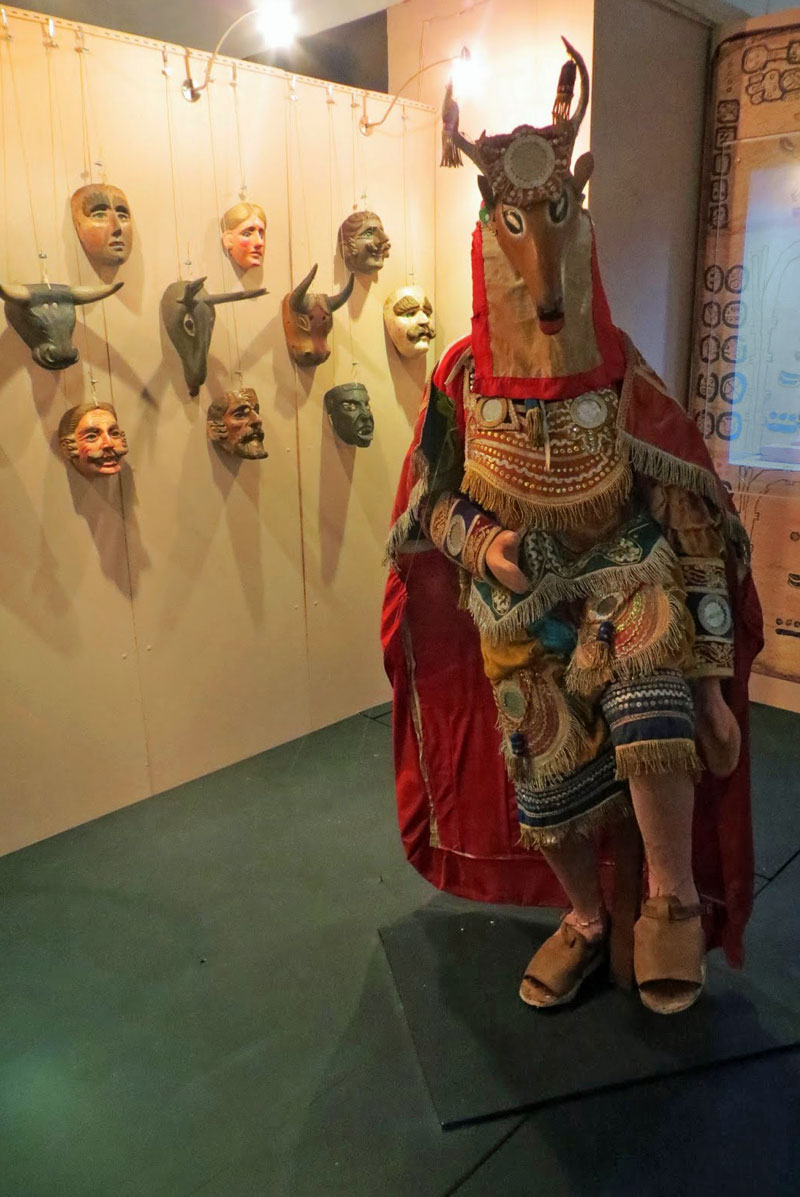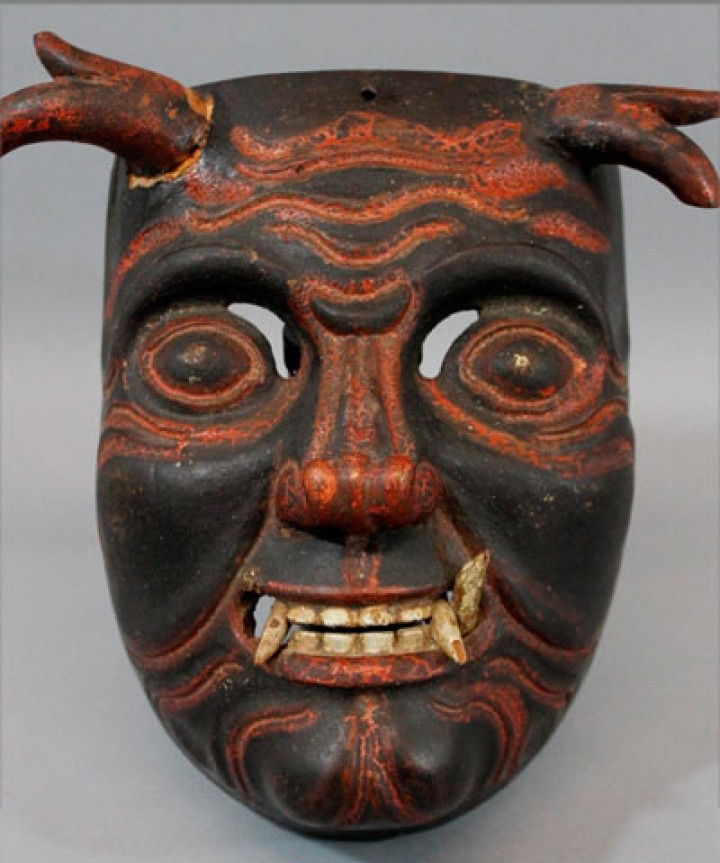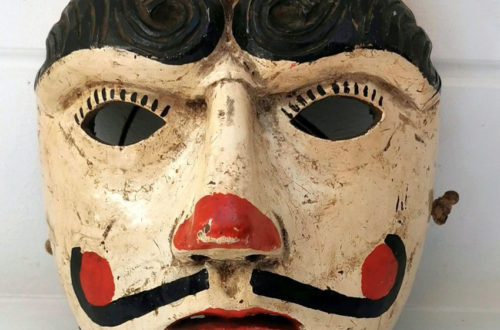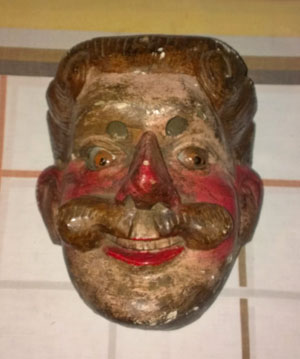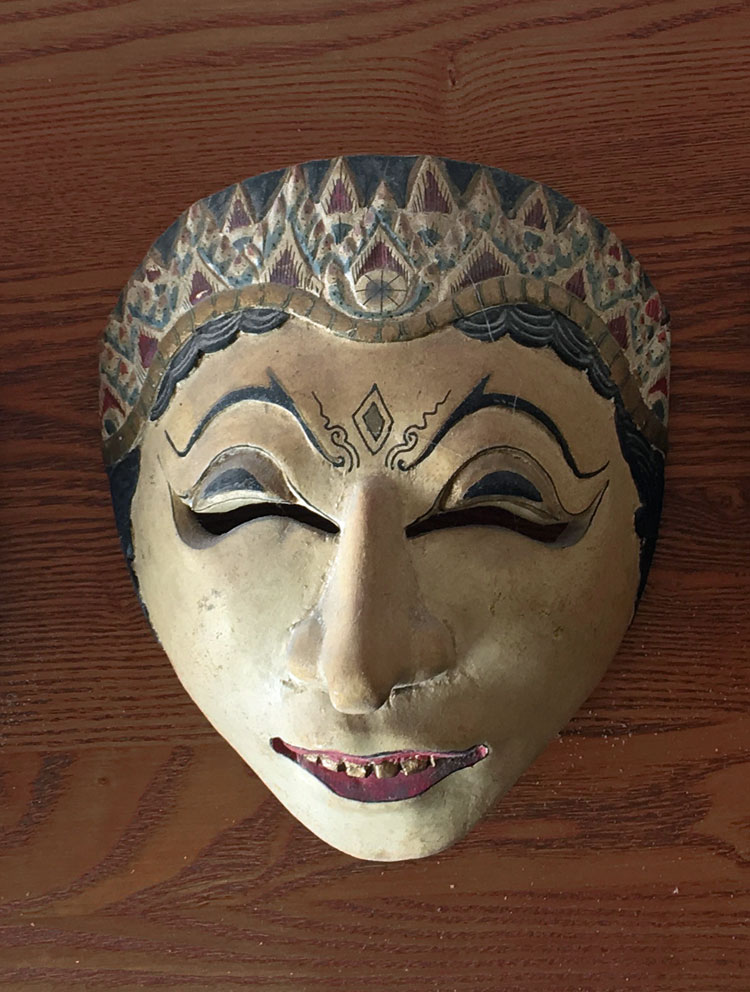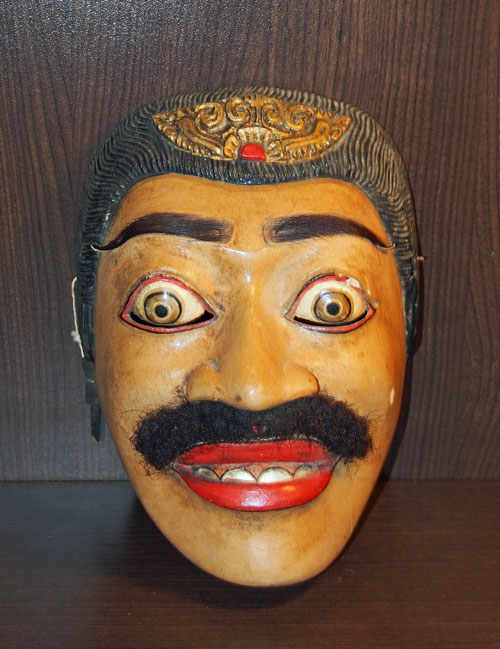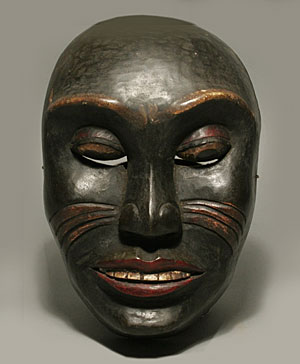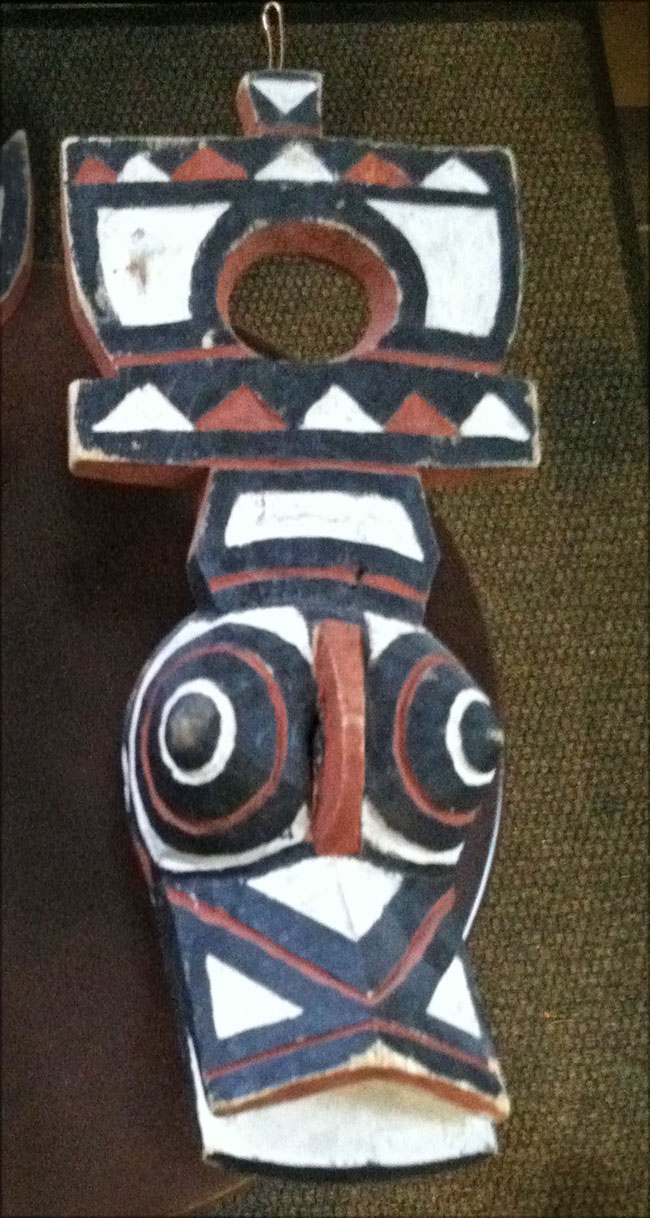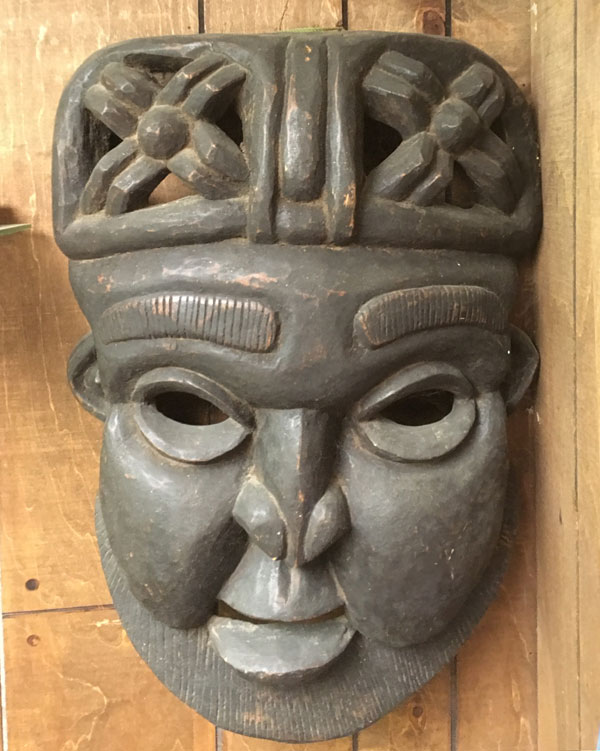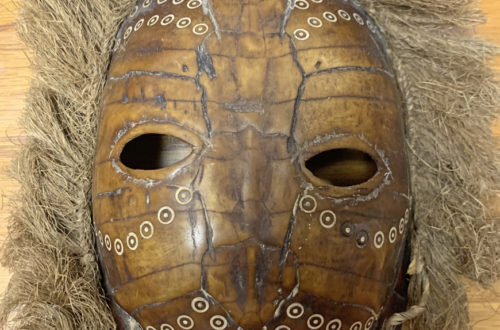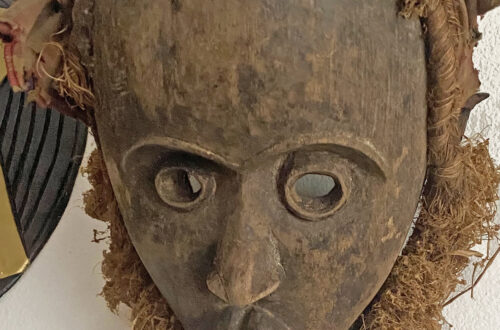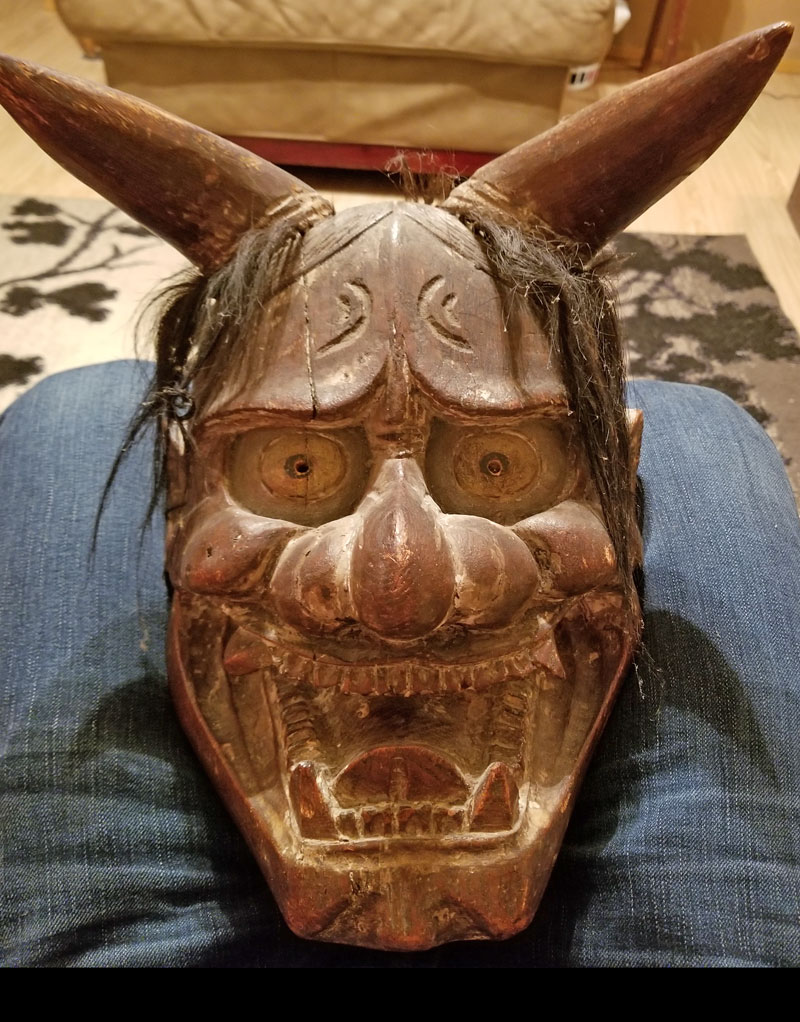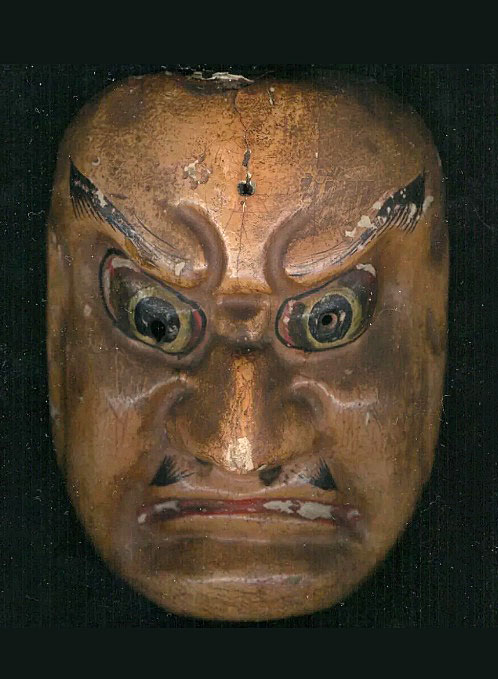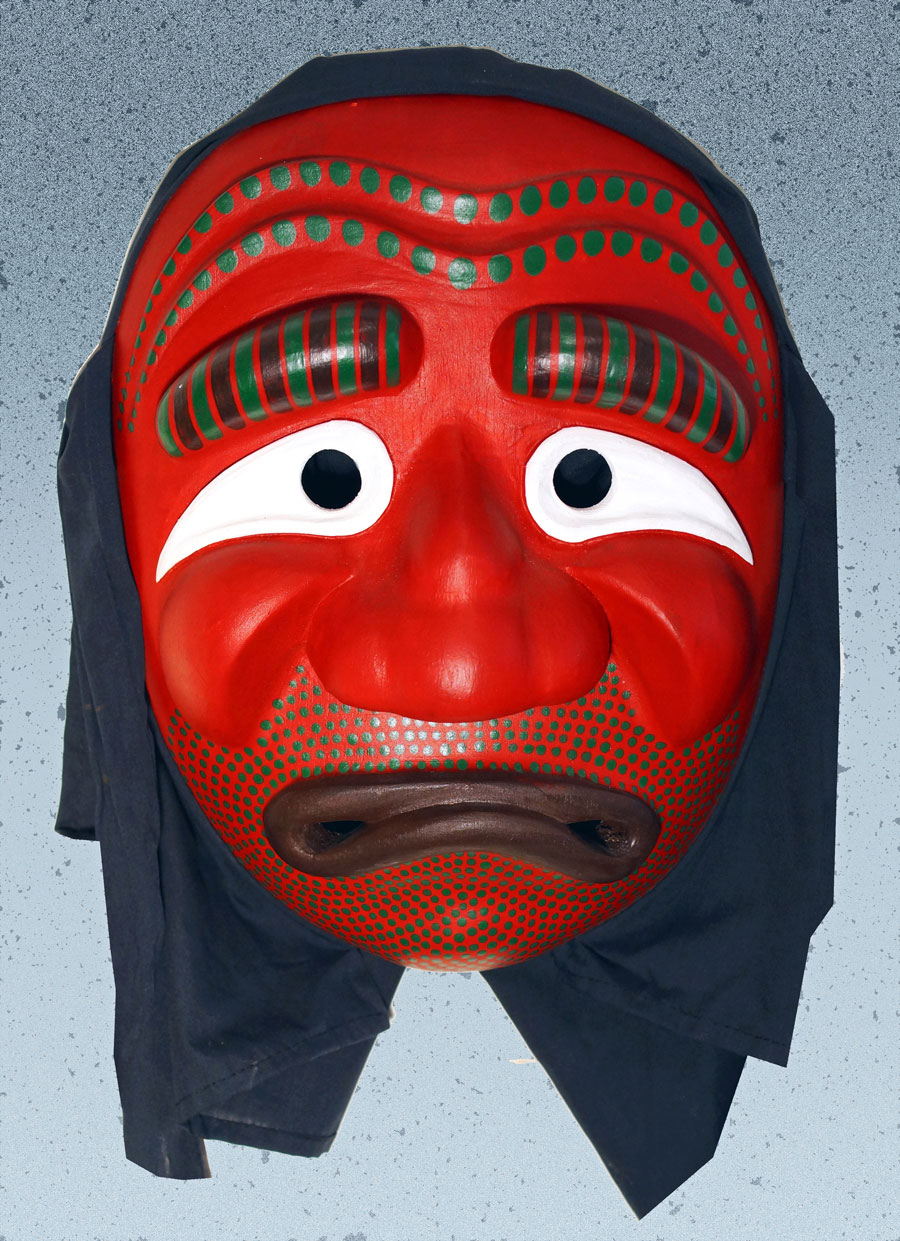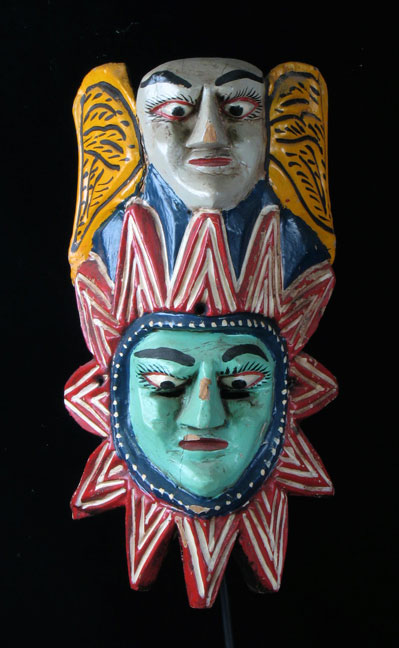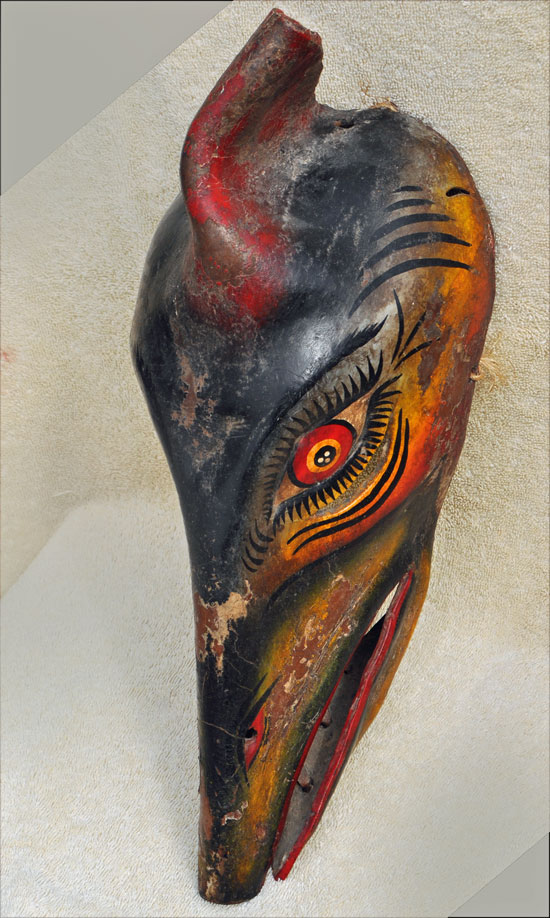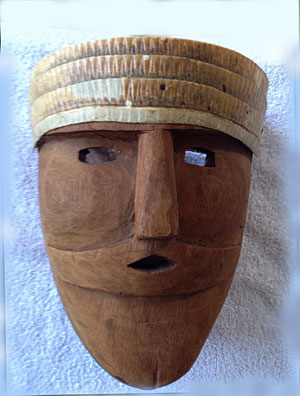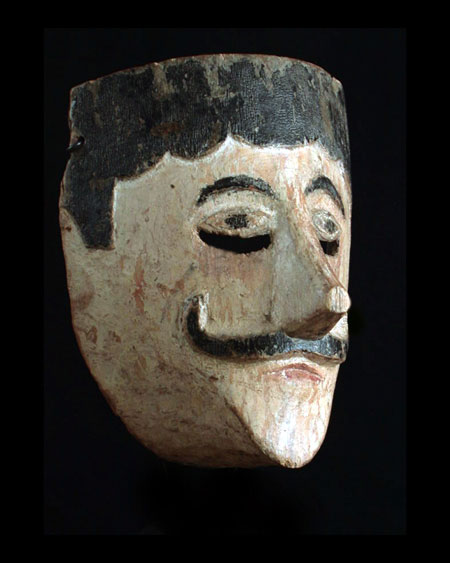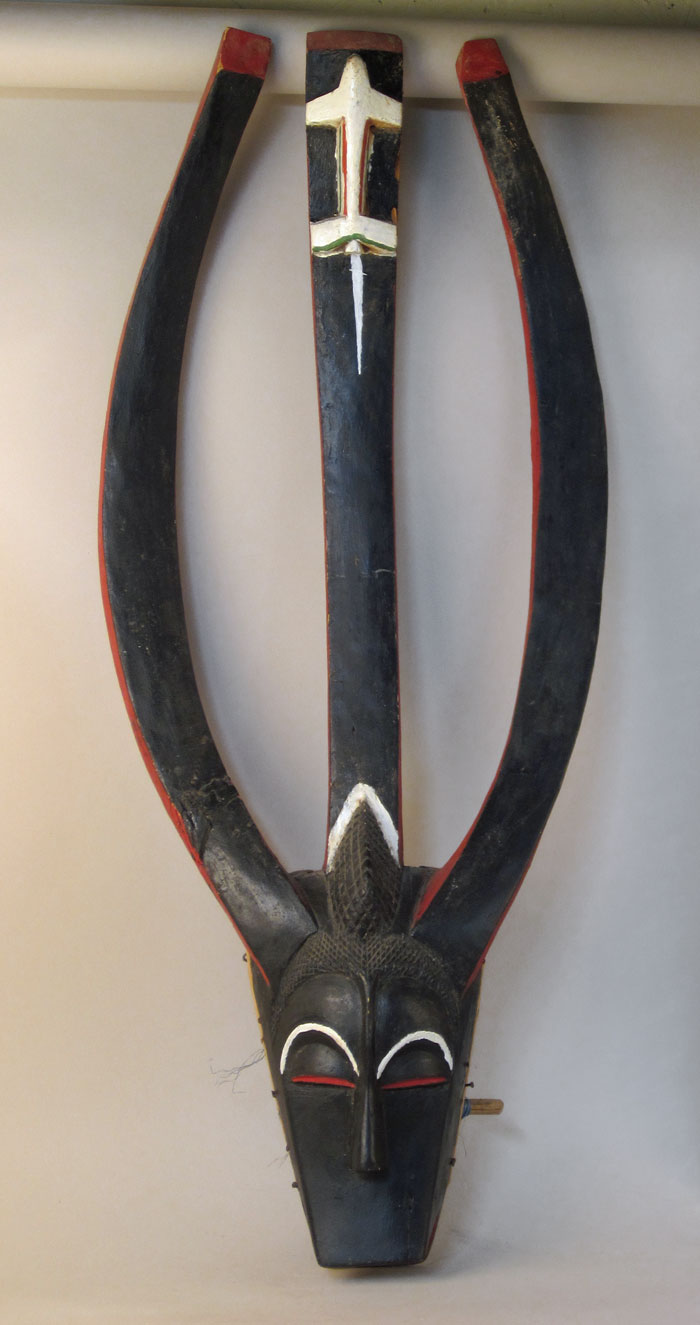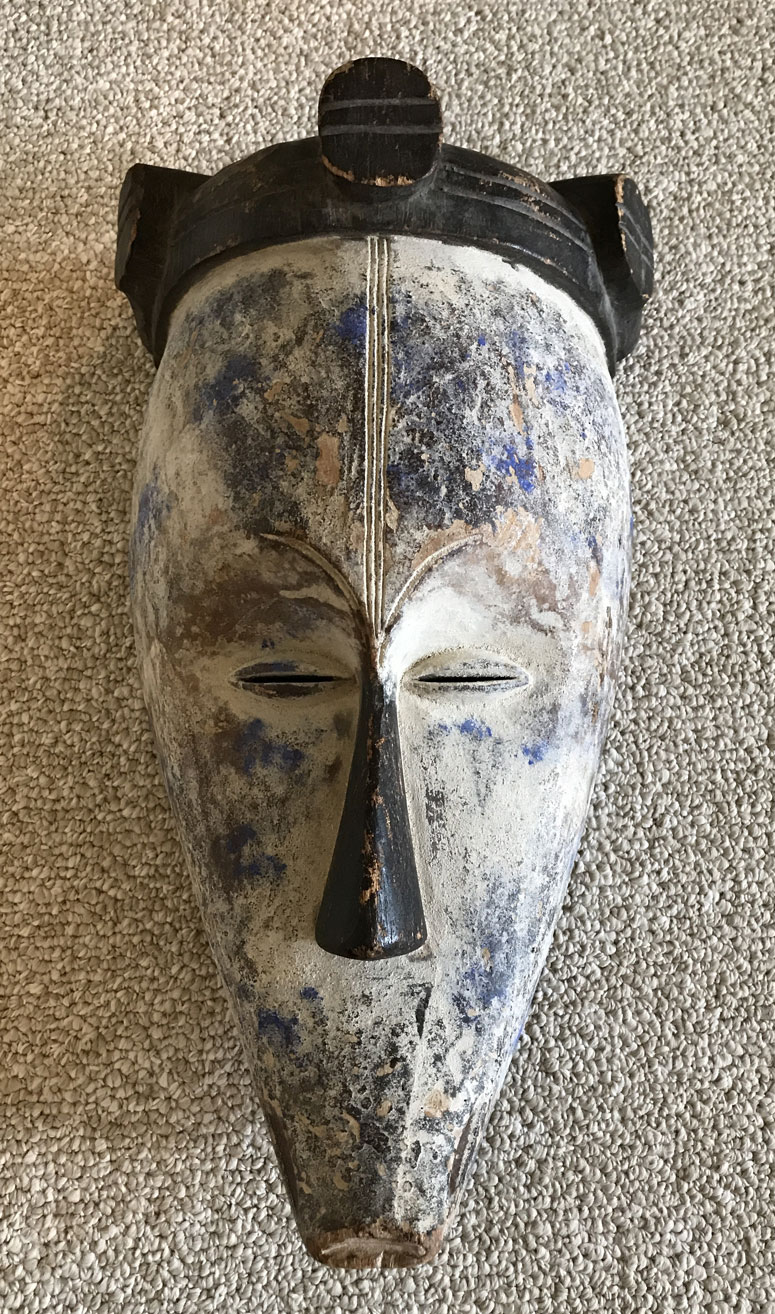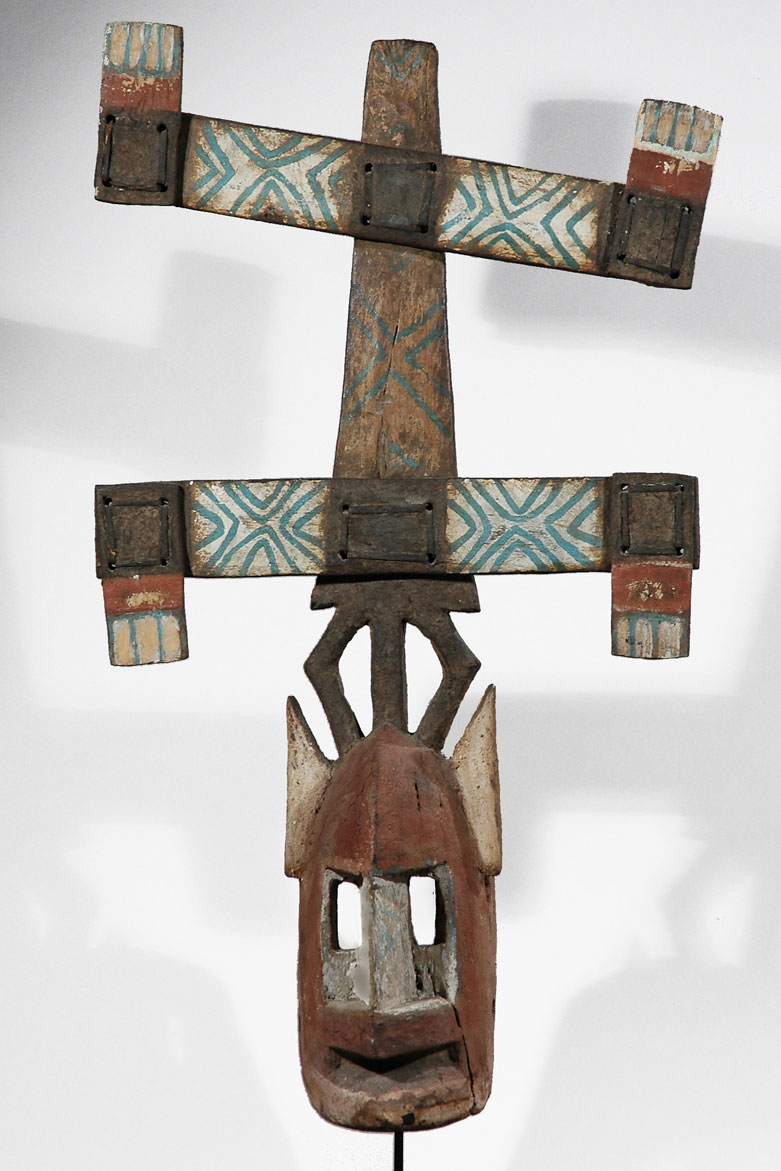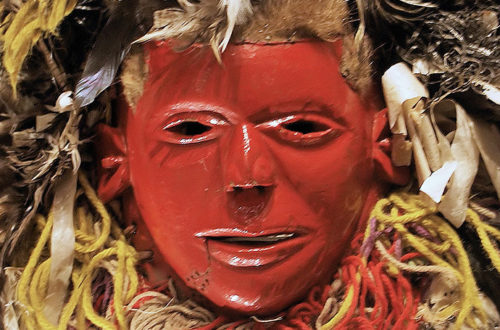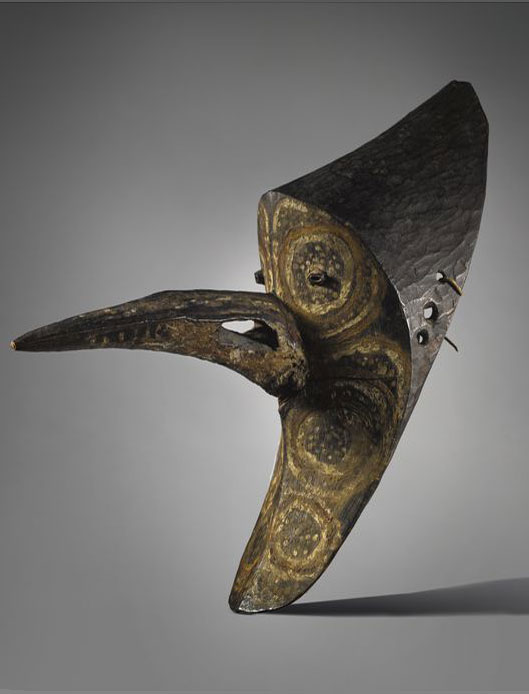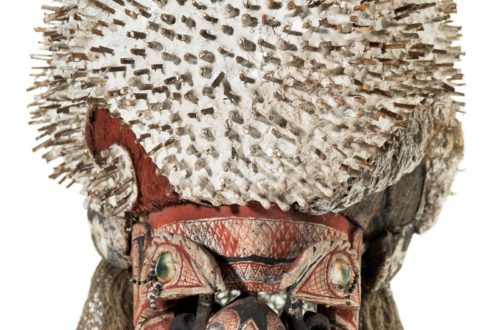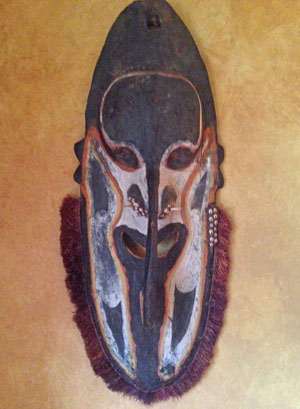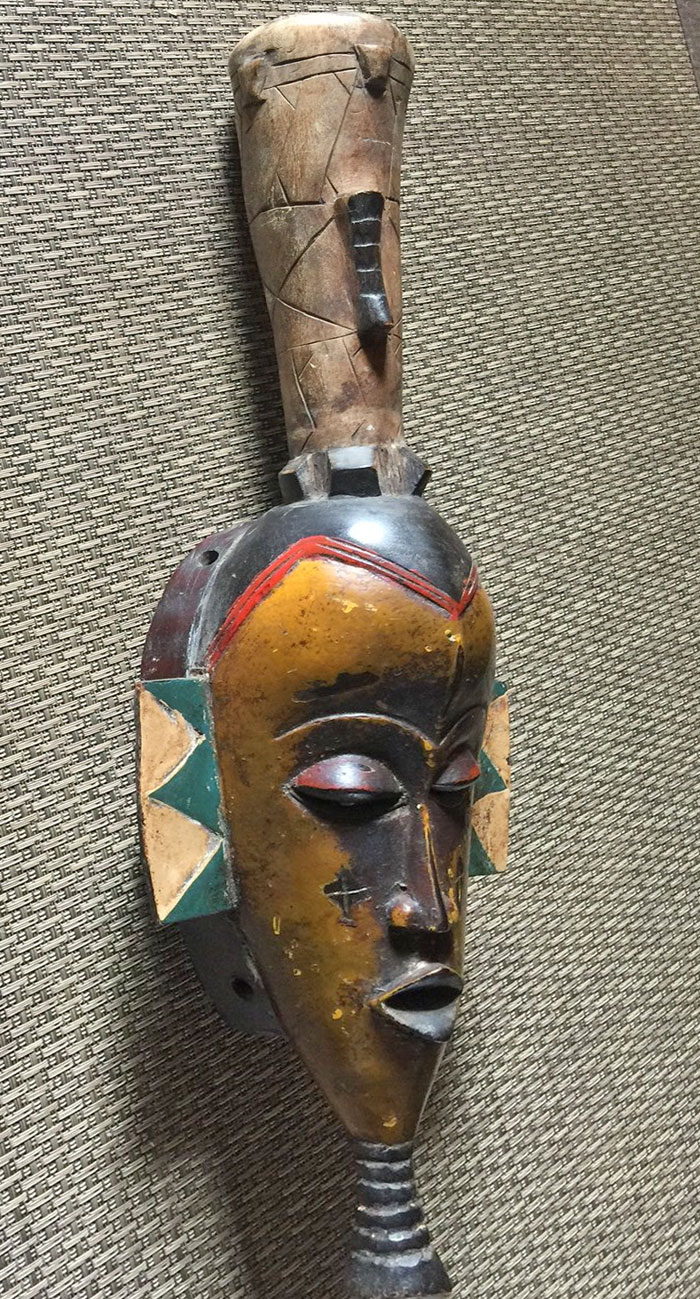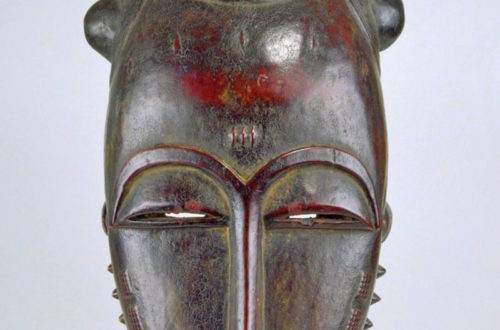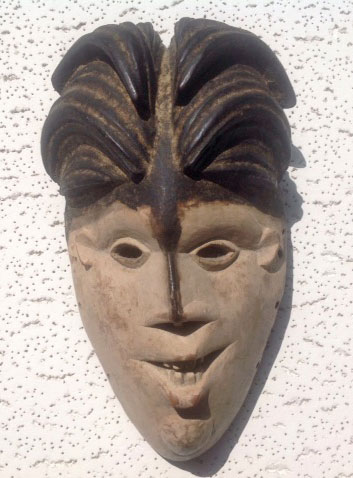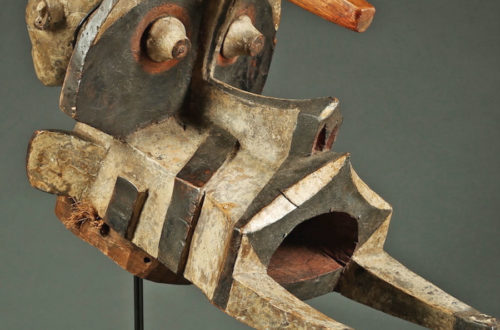Q: Here I’ve attached pictures of my mask. It’s pretty small, so I don’t think it’s meant to be worn except maybe by a toddler. It’s about 8″ in diameter, maybe less. I got it for free on my local buy nothing group (Facebook) here in Seattle so I didn’t pay anything for it. Any info you could tell me about it would be wonderful. Thanks, Tracy, 1161 A: Mexican decoratives are not really masks, nor are they meant to be authentic artifacts. They’re wall-hangings made for tourists. I find them colorful, inventive, and almost as interesting as real dance masks. Mexican mask makers are very creative and frequently come…
-
-
Black-faced monk from Korea
This mask is very popular in Yangju, South Korea. In the dance drama this ugly old man tries to seduce a pretty girl. The white dots on his black face are supposed to represent small pox. There are quite a few characters in these celebrations, but the favorites are monks and pretty girls. The girl masks are colored white and the monks are black. This one is made out of wood. The other common material used in Yangju is papier mache. Korean masks look much different from those of other countries around the world. B+
-
Guatemala is the place for masks
This photo was taken at a museum in Guatemala City. The featured mask (with costume) is for the Deer Dance. The ones on the wall come from different dances. Shops will rent masks and costumes to the locals for an affordable price. They’re called morerias. This small country takes masquerade very seriously. There are many unique masks for tourists and collectors to enjoy. In my book, Masks of the World, I devote a whole chapter to this special part of the world. Save
-
Classic dance mask from Java
Q: I have 6 authentic Javanese dancing masks from the early 1900’s. We got them from a parent who was an original member of the Denishawn school of dancing in Los Angeles in 1915. The masks were part of a world tour. It’s possible there are pictures of the dancers with the masks. I did some research on Denishawn dance and if you are a dancer then you know what its all about. Tracie, 1158 A: It’s nice to see a group of characters from a Javanese traditional dance drama, though I will use just one for this blog. It would be Sita, the beautiful queen of the great king…
-
Traditional Bobo mask
Q: I’d appreciate any information on this mask. I bought it at an estate sale several years ago. It is very light wood and the paint seems to be original. Could it be part of a totem? I’ve searched lots of sites with no results. Mickey, 1157 A: The Bobo (or Bwa) live in the dry savannah land of central Burkina Faso. Like other people in this area, they seek the help of powerful spirits who live in the wild forests, bush country and rivers surrounding their villages. This mask is traditional in design and its choice of black, white and red. The triangular jaw (or beak) is not seen…
-
Hannya the She Devil
Q: My mother brought this mask with her when she moved to the main land from Kauai, HI. She told me someone she knew got it from the Wilcox family estate on Kauai in the 70s. I’m assuming it is Japanese from looking at the style and markings on the rear. I am interested in learning more about it. Michael, 1156 A: It is indeed Japanese– one of the most famous characters from the classic Noh theater, Hannya the she devil. Just Google her for more information. The good news is that all kinds of Americans love this character, not just mask collectors, so you can sell it easily. The…
-
My first mask
I bought this at a flea market in the 1970’s. Tons of them were being made in the state of Guerrero for sale to tourists and homeowners in the USA. Once when I was visiting Los Angeles I saw a truck load of them dumped on a store’s loading dock. No two were alike. The euphemistic term for these non-traditional masks is “decoratives.” In the book Masks of the World pages 133-5 are devoted to the genre. That is because these masks often exhibit great creativity, but always in colors and forms that are characteristic of Mexican culture. I think Picasso would have loved them. C Save
-
Guro antelope mask
I have a fondness for African masks, especially if I know they are authentic. Unfortunately, most of the ones that look old and used are not. But they sell well. So I keep my eyes pealed for masks colorfully painted with store-bought enamel. That is what African carvers have been painting with on the masks they sell to dancers for ceremonies… since the middle of the last century. Here is a handsome, 35-inch antelope mask that was probably performed only once and sold to a smart bystander. Most runners don’t buy this brightly colored stuff, and certainly not one with a jet plane on its middle horn. (That black color…
-
Mask collecting for the rich
Here is an older mosquito mask from the Bungain people of East Sepik Province of Papua New Guinea. It was collected around 1930 when the Bungain were a stone-age culture isolated from the modern world. The mask was carved with stone, shells or bones, and colored with natural pigments. It is in good condition and there is documentation of its origin and subsequent owners. (That’s called provenance.) It will be auctioned by Sotheby’s in NYC on May 15th… just five days from now. The suggested price range is $150,000-250,000. Don’t worry my friends, there will be some pieces selling for as little as $2,000-5,000. It must be great being in…
-
Some Guro masks are profitable art
Q: I bought this mask in Ghana in 1997. Paid $50 after a bit of haggling. It’s made of wood and is 20 1/2 ” top to bottom and 7″ across. The vendor thought it was from Nigeria but I’ve not seen any similar masks from there. I did find one online with a very similar face but with ram’s horns instead of the single “spike”. There was no origin listed. Thanks for your help. Bob, 1152 A: Ghana borders Ivory Coast, where the Guro are one of the larger ethnic groups. Lots of masks are made there. Some are for ceremony, but most are for sale. Over the years…
